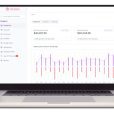We are in a down market. Yes, there are bullish recoveries. However, these are known as false reversals. To make money off a down market investors flock to the following strategies.
- Gold stocks = Negative correlation to the market
- Shorting stocks through options, futures, and swaps (financial derivatives)
- Inverse ETFs = A growing trend.
Today we will be discussing a polarising inverse ETF ASX: BBUS.
Article outline
1. Why is BBUS a popular inverse ETF?
2. The hidden risks behind BBUS.
3. Is BBUS the golden ticket in the down market?
Why is BBUS trending ?
BBUS is an inverse ETF. An inverse ETF at a basic level goes up when the market goes down. BBUS is an inverse ETF of the S&P 500 (US index). Thus, if the S&P 500 plunges BBUS surges.
America is suffering on all fronts at the moment. Similar to Germany in World War II. The American economy is experiencing:
- Rampant unemployment: Currently 29+ million= 4.4%(March)
- An unprecedented health crisis: Active cases = 964,817 and Total Deaths 72,275.
- Oil crisis = Oil accounts for 7.6% of America’s GDP.
- Houses prices plummeting = Less buyers and rich buyers are causing forced sales.
- Businesses coming to a screeching halt: Airlines, cruise ships, coffee stores, and retail stores like Apple etc.
Considering the above factors, it should not come as a surprise that BBUS rose 150% in a month (Feb 20th – March 23rd). While, BBUS trades at the $3.30 mark, a 50% decrease from its high of $6.60, the inverse ETF is still popular.
Why? Because the above factors are still crippling the American economy as we speak. Unemployment is expected to rise in the coming months. The Oil crisis is still intensifying. People are not focusing on buying new homes. Ultimately, causing housing prices to plummet. COVID-19 continues to keep businesses closed and inject fear into society.
Most importantly, American people are locked in their houses without a job. Meaning people are not spending and stimulating the economy. The American government is holding the economy together by a stimulus string. Therefore, BBUS is a hot inverse ETF. Because there is still the argument that America could slide into a recession. In which, BBUS would skyrocket.
Why BBUS is not a normal Inverse ETF?
Now when I said if the S&P 500 goes down BBUS goes up, it is actually not that simple. BBUS is a leveraged inverse ETF. What does that mean?
Normal inverse ETFs mirror the index in equal but opposite way. For example ASX: BEAR is a normal inverse ETF of the ASX 200. Meaning, if the ASX 200 goes down by 2% then BEAR goes up by 2%. Normal inverse ETFs get the 1:1 ratio by using shares that have a negative correlation to the market (beta -1).
Leverged inverse ETFs go 2x, 3x or even 4x in the opposite direction to their linked index. BBUS holds a 2-2.75: 1 ratio over the S&P 500. Meaning if the S&P 500 goes down by 10% then BBUS goes up 20-27.5%. However, the flip side is also true. In which you would suffer a horrific capital loss (on paper). BBUS gets its 2-2.75:1 ratio by using US futures (financial derivative). Because the S&P 500 is not open during ASX trading hours. Thus, the BBUS’s performance during the day will reflect movements in the US futures market.
It is simple to short a US recession through BBUS as a retail investor. Because all you have to do is purchase BBUS shares. However, it is only simple because behind the scenes Beta Shares Fund managers are dealing with complex financial derivatives (US futures). Therefore, if you are willing to be at the mercy of US futures and let the fund managers do the complex trades then BBUS could be the investment for you.
Think of BBUS as a BIG Short of the American economy. If you are wrong, BBUS’s leverage will see your money evaporate. However, if you are right in predicting the US recession, BBUS shares should make you an unimaginable fortune.
When is BBUS worth the investment?
Before I start, I am obliged to remind our readers that this is not advice only general commentary from my extensive research in this area.
Short: Between now and the coming months.
The likelihood of the US entering a recession is high. Thus the possibility of BBUS soaring once a recession looms is high.
Right now, we are in a false recovery. The illusion of a recovery is causing BBUS to plummet. Making some investors apprehensive about investing in BBUS. I expect the decline in BBUS to continue in the short-term. Because, the reopening of the economy, flattening of the coronavirus curve, and relaxation in restrictions should cause even more bullish activity. In which BBUS declines further.
However, once a second wave appears, the bulls will run away, and BBUS should rise. Also, even if COVID-19 miraculously fizzles out in the coming months, the virus caused irreversible damage. Meaning a recession is likely.
You always want to be ahead of the curve. So the best time to invest in BBUS is when the market is bullish but will soon be bearish. Why? Because the bullish activity will allow you to get an excellent entry point. The bearish market will boost BBUS up. Thus, if unemployment rises, the oil crisis intensifies, and housing prices decline even when the economy reopens, there is a good chance that the recession is inevitable.
The information above is the opinion of the author and should not be taken as financial advice. Youth Investment Group has no liability for personal financial interests or investment decisions. You should make your own investment decisions based upon your own research and what you believe is best for you.
- Is ASX: OOO the riskiest or smartest oil investment? - May 7, 2020
- Is BBUS the best way to make money during the crash? - May 7, 2020













Leave a Comment
You must be logged in to post a comment.